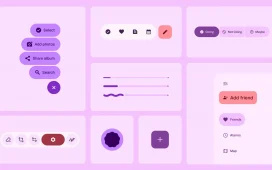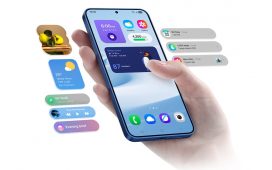Google is set to enhance the Pixel user experience with a simple yet highly anticipated feature in Android 16. The upcoming update will finally introduce the ability to turn off your screen with a double-tap gesture, matching functionality already available on competing devices. This practical addition addresses a longstanding request from the Pixel community.
Android users have long appreciated the convenience of gesture controls on their devices. While Pixel phones have allowed users to wake their screens with a double tap for years, the logical counterpart—turning the screen off with the same gesture—has been mysteriously absent. Now, buried in the code of Android 16 Beta 4, evidence suggests this practical feature is finally coming to Pixel devices, bringing them in line with offerings from Samsung, Xiaomi, and other manufacturers.
Double-tap to sleep: the missing Pixel feature finally arriving
The touch-based interaction landscape on Android devices has evolved significantly over the years, with manufacturers constantly seeking ways to enhance user convenience. The double-tap to wake feature has become a standard offering across premium smartphones, allowing users to quickly check notifications without reaching for the power button.
However, Google’s implementation has remained curiously one-sided until now. Tech analyst Mishaal Rahman recently discovered code within Android 16 Beta 4 that reveals Google is working on adding the ability to turn off Pixel screens with a double tap. While the feature remains inactive by default in the current beta, Rahman was able to enable it by manually confirming its development status.
This addition would complete the natural gesture cycle that users of other Android interfaces have enjoyed for years:
- Double-tap to wake when the screen is off
- Double-tap to sleep when the screen is on
- Fingerprint sensor authentication without waking the screen first
- Various other gesture controls for quick actions
Many Pixel owners have resorted to third-party applications to achieve this functionality, which will become unnecessary once the native implementation rolls out.
How the feature compares across Android manufacturers
The implementation of screen-off gestures varies across different Android interfaces. Samsung’s One UI offers double-tap to sleep functionality both on the lock screen and home screen, providing maximum user flexibility. Similarly, for several generations, Xiaomi’s MIUI and OnePlus’s OxygenOS have included comprehensive gesture controls, including double-tap to sleep.
It remains unclear whether Google’s implementation will work only on the lock screen or extend to the home screen as well. The distinction is important for users who frequently rely on this gesture throughout the day.
| Manufacturer | Interface | Double-tap to Wake | Double-tap to Sleep | Sleep Gesture Locations |
| Google (Current) | Android | Yes | No | N/A |
| Google (Android 16) | Android | Yes | Coming soon | TBD |
| Samsung | One UI | Yes | Yes | Lock screen & Home screen |
| Xiaomi | MIUI/HyperOS | Yes | Yes | Lock screen & Status bar |
| OnePlus | OxygenOS | Yes | Yes | Lock screen & Home screen |
Timeline for the new feature rollout
According to Rahman’s findings, the double-tap to sleep functionality may not be ready for the initial stable release of Android 16, scheduled for June 2025. Instead, users might need to wait for the first quarterly platform release, which typically arrives a few months after the main update.
This delayed implementation aligns with Google’s approach to feature releases, which often separates core operating system updates from feature drops. The company has established a pattern of introducing new capabilities through quarterly updates, allowing for proper testing and refinement.
The timeline appears to place the release of this feature alongside other additions to Android 16, including:
- Enhanced PIN supervision options in parental controls
- Improvements to the fingerprint unlocking system
- Additional gesture controls for system navigation
- Refinements to the notification management system
Until the official release, Pixel users eager to utilize this functionality can continue using third-party applications that provide similar capabilities. However, these typically require additional permissions and may impact battery life.
Why gesture controls matter in modern smartphones
Adding double-tap to sleep might seem like a minor update, but it reflects a broader trend in smartphone interaction design. Gesture-based controls have become increasingly important as devices grow larger and one-handed operation becomes more challenging.
For many users, the power button is sometimes difficult to reach, especially on larger devices like the Pixel 8 Pro. Simple touch gestures provide convenient alternatives that enhance the overall user experience without requiring significant hardware changes.
Research indicates that users activate their smartphones an average of 80-150 times daily. Each interaction that can be simplified or made more intuitive represents a meaningful improvement in the user experience. This particular addition addresses what many Pixel users have described as a noticeable gap in Google’s otherwise polished interface.
By bringing this feature to Pixel devices, Google acknowledges user feedback while simultaneously addressing a competitive disadvantage compared to other Android manufacturers who have offered this functionality for years. The update represents another step in Google’s efforts to refine the Pixel user experience and strengthen its position in the premium smartphone market.










